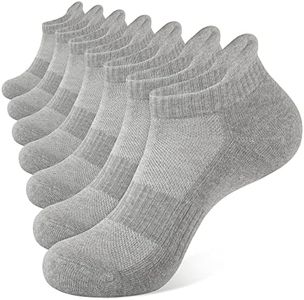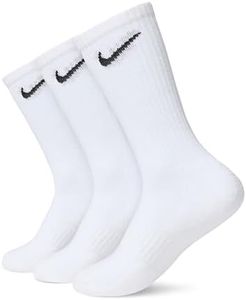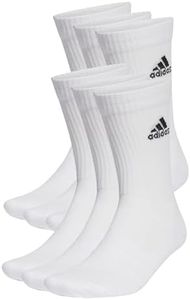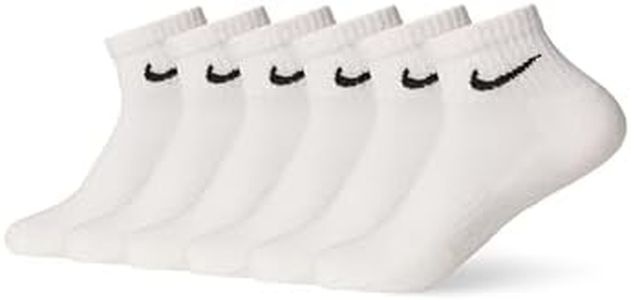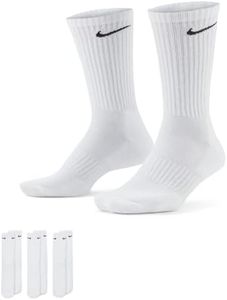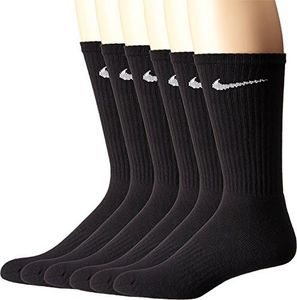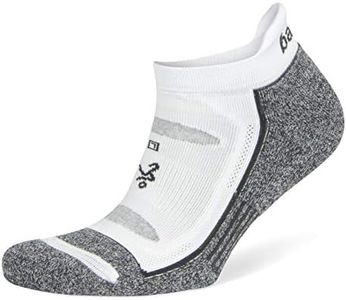We Use CookiesWe use cookies to enhance the security, performance,
functionality and for analytical and promotional activities. By continuing to browse this site you
are agreeing to our privacy policy
10 Best Running Socks
From leading brands and best sellers available on the web.Buying Guide for the Best Running Socks
When choosing running socks, it’s essential to remember that the right pair can make a big difference in your comfort and performance. The right socks help prevent blisters, manage sweat, and add cushioning where you need it, making every run more enjoyable. To find the perfect fit, consider your running conditions, personal comfort preferences, and how much support or breathability you like. Evaluating these features will help you select socks that keep your feet happy, mile after mile.MaterialThe material of running socks affects how well they manage moisture, regulate temperature, and provide softness against your skin. Good running socks are made from synthetic fibers like polyester, nylon, or blends with merino wool because these materials wick away sweat and dry quickly, keeping your feet dry and reducing the chance of blisters. If your runs are in warmer weather or you sweat a lot, choose highly breathable, moisture-wicking materials. For colder runs, merino wool is great as it offers warmth while still handling moisture. Cotton is best avoided for running socks, as it tends to stay wet and can cause blisters.
Thickness and CushioningThickness and cushioning determine how much padding your socks offer, which can affect comfort, protection, and shoe fit. Thin socks feel light and allow for a tighter shoe feel, suitable for runners who prefer minimal interference between their feet and shoes or for use in warm weather. Medium cushioning provides a balance of comfort and sensitivity, working well for most runners. Thick, cushioned socks add extra softness and absorption, helpful on longer runs or for those with sensitive feet, but may require slightly more space in your shoes. Choose based on your comfort needs and the fit with your running shoes.
Fit and SizingA good fit ensures that running socks won’t bunch up or slide around, which helps prevent blisters and discomfort. Running socks should be snug but not tight, conforming closely to your foot shape. Pay attention to sizing charts from different brands, as fits can vary. If you have narrow, wide, or high-arched feet, look for socks with stretch zones or anatomical designs. Trying socks with an actual run can help you understand if they fit well for your foot and shoe combination.
Seam DesignSeams can cause irritation, especially on long runs, if they rub against your toes or other pressure points. Many running socks now offer seamless or flat-seamed toes to minimize chafing and discomfort. If you’re prone to blisters or run longer distances, prioritize socks with minimal or well-placed seams to reduce risk of irritation.
Breathability and VentilationBreathability and ventilation refer to how well the sock allows air to circulate, which helps keep your feet cool and dry. Many running socks have mesh panels or special ventilation zones on the top or sides. If you often run in hot weather or have sweaty feet, prioritizing socks with good airflow helps reduce overheating and moisture buildup.
Height (Cut)Sock height determines how far the sock comes up on your leg, affecting comfort, style, and protection. No-show or low-cut socks work well if you like a minimalist look and want little coverage above the shoe. Quarter or crew lengths provide more protection against rubbing from shoes and debris, which can be useful on trails. Taller socks may also offer extra support or warmth for cooler conditions. Choose the height based on your running environment and personal preference.
CompressionSome running socks offer compression, which means they gently squeeze the foot or ankle to help blood flow and reduce fatigue or swelling. Light compression can benefit longer runs or recovery periods. Consider compression socks if you often run long distances, have issues with swelling, or want extra support; otherwise, standard socks are usually sufficient.


